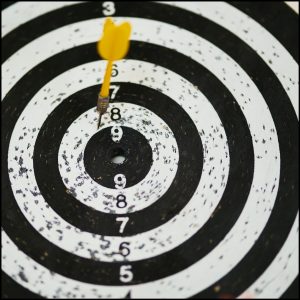 Do you want to improve your academic performance and well-being? Do you want to get immediate feedback on your learning and progress? Do you want to take charge of your own education and become a more independent and self-regulated learner?
Do you want to improve your academic performance and well-being? Do you want to get immediate feedback on your learning and progress? Do you want to take charge of your own education and become a more independent and self-regulated learner?
If you answered “Yes” to any of these questions, then you might want to try self-assessment. Self-assessment is a form of formative assessment that involves evaluating your own work and learning process. It can help you identify your strengths and weaknesses, set realistic goals, monitor your progress, and adjust your strategies accordingly. Self-assessment can also increase your motivation, engagement, and self-confidence, as well as reduce your stress and anxiety.
Here, we explain what formative assessment is and how self-assessment is a key element of it. We also provide you with a step-by-step guide on how to do self-assessment effectively and efficiently. By following these steps, you will be able to use self-assessment as a powerful tool to enhance your learning and well-being.
What is Formative Assessment?
Formative assessment is a type of assessment that occurs during the learning process, rather than at the end of it. It is designed to provide feedback to both teachers and students on how well they are achieving the learning objectives and what they need to do to improve. Formative assessment can take various forms, such as quizzes, assignments, discussions, observations, peer feedback, and self-assessment.
The main purpose of formative assessment is to support learning and development, rather than to measure or grade it. Formative assessment can help teachers to adjust their instruction and provide differentiated support to meet the diverse needs of their students. It can also help students to become more aware of their own learning process and take more responsibility for their own improvement.
Why is Self-Assessment Important?
 Self-assessment is a key element in formative assessment because it involves students in thinking about the quality of their own work, rather than relying on their teacher as the sole source of evaluative judgments. Self-assessment can help students to:
Self-assessment is a key element in formative assessment because it involves students in thinking about the quality of their own work, rather than relying on their teacher as the sole source of evaluative judgments. Self-assessment can help students to:
- Develop metacognitive skills: Metacognition is the ability to think about one’s own thinking and learning. It involves planning, monitoring, evaluating, and regulating one’s own cognitive processes. Metacognitive skills are essential for effective learning because they enable students to select appropriate strategies, check their understanding, identify errors, and correct them.
- Increase motivation and engagement: Motivation is the drive or desire to learn something. Engagement is the degree of involvement or interest in the learning activity. Both motivation and engagement are influenced by factors such as goal orientation, self-efficacy, feedback, and autonomy. Self-assessment can enhance motivation and engagement by helping students to set clear and specific goals, track their progress, receive constructive feedback, and exercise more control over their own learning.
- Improve self-regulation: Self-regulation is the ability to manage one’s own emotions, behaviors, and actions in order to achieve desired outcomes. Self-regulation is crucial for academic success because it enables students to cope with challenges, overcome distractions, persist in difficult tasks, and manage stress. Self-assessment can foster self-regulation by helping students to reflect on their emotions, behaviors, and actions during the learning process and make necessary adjustments.
- Enhance self-confidence: Self-confidence is the belief or trust in one’s own abilities or qualities. Self-confidence is important for academic achievement because it affects how students approach new tasks, how they respond to feedback, how they cope with failure, and how they celebrate success. Self-assessment can boost self-confidence by helping students to recognize their strengths, acknowledge their achievements, appreciate their efforts, and celebrate their growth.
As you can see, self-assessment can have many benefits for your learning and well-being. However, self-assessment is not always easy or natural. It requires practice, guidance, and support. So how do you do self-assessment effectively and efficiently?
How to Do Self-Assessment Effectively and Efficiently
Self-assessment is not a one-time event, but a continuous process that occurs before, during, and after the learning activity. To do self-assessment effectively and efficiently, you can follow these steps:
Step 1: Set Clear and Specific Learning Goals
 Before you start any learning activity, you should set clear and specific learning goals for yourself. Learning goals are statements that describe what you want to learn or achieve by the end of the activity. They should be SMART: Specific, Measurable, Achievable, Relevant, and Time-bound.
Before you start any learning activity, you should set clear and specific learning goals for yourself. Learning goals are statements that describe what you want to learn or achieve by the end of the activity. They should be SMART: Specific, Measurable, Achievable, Relevant, and Time-bound.
For example, instead of saying “I want to learn more about formative assessment”, you can say “I want to be able to explain the concept and benefits of formative assessment and apply it to my own learning by the end of this week”.
Setting clear and specific learning goals can help you to:
- Focus your attention and effort on what is important
- Monitor your progress and adjust your strategies
- Evaluate your performance and identify areas for improvement
Step 2: Use Various Sources of Feedback
 During the learning activity, you should use various sources of feedback to check your understanding and performance. Feedback is information that tells you how well you are doing in relation to your learning goals. It can come from different sources, such as:
During the learning activity, you should use various sources of feedback to check your understanding and performance. Feedback is information that tells you how well you are doing in relation to your learning goals. It can come from different sources, such as:
- Yourself: You can use self-assessment tools, such as rubrics, checklists, or quizzes, to evaluate your own work and learning process. You can also use self-questioning techniques, such as asking yourself “What did I learn?”, “How did I learn it?”, “What did I do well?”, “What did I struggle with?”, or “What can I do better next time?”.
- Your peers: You can ask your classmates or friends to review your work and provide constructive comments or suggestions. You can also exchange ideas or opinions with them and learn from their perspectives or experiences.
- Your teacher: You can seek feedback from your teacher on your work or progress. You can also ask questions or clarifications if you are unsure or confused about something.
Using various sources of feedback can help you to:
- Gain a more accurate and comprehensive view of your strengths and weaknesses
- Learn from different perspectives and experiences
- Receive timely and specific guidance and support
Step 3: Reflect on Your Learning and Performance
 After the learning activity, you should reflect on your learning and performance. Reflection is the process of thinking deeply about what you have learned and how you have learned it. It involves analyzing your actions, outcomes, feelings, thoughts, and strategies. It also involves making connections between what you have learned and what you already know or need to know.
After the learning activity, you should reflect on your learning and performance. Reflection is the process of thinking deeply about what you have learned and how you have learned it. It involves analyzing your actions, outcomes, feelings, thoughts, and strategies. It also involves making connections between what you have learned and what you already know or need to know.
To reflect on your learning and performance, you can use the following questions:
- What were my learning goals for this activity?
- Did I achieve my learning goals? Why or why not?
- What did I learn from this activity? How does it relate to what I already know or need to know?
- How did I learn from this activity? What strategies did I use? How effective were they?
- How did I feel during this activity? What factors influenced my emotions?
- What challenges did I face during this activity? How did I overcome them?
- What strengths did I demonstrate during this activity? How can I build on them?
- What weaknesses did I reveal during this activity? How can I address them?
- What feedback did I receive from myself, my peers, or my teacher? How did I use it to improve my learning or performance?
- What can I do differently or better next time?
Reflecting on your learning and performance can help you to:
- Deepen your understanding and retention of what you have learned
- Develop critical thinking and problem-solving skills
- Enhance your self-awareness and self-regulation
- Transfer your learning to new situations or contexts
By following these steps, you will be able to use self-assessment as a powerful tool to boost your grades and well-being. Self-assessment can help you become a more independent and self-regulated learner who takes charge of your own education.
Conclusion
Self-assessment is a valuable and transformative tool that not only enhances academic performance but also nurtures overall well-being. By actively engaging in self-assessment, you can gain metacognitive skills, increase motivation and engagement, improve self-regulation, and boost self-confidence. By setting clear and specific learning goals, utilizing various sources of feedback, and engaging in reflective practices, you can take charge of your education, become more independent, and ultimately achieve higher grades and a greater sense of well-being. Embracing self-assessment is a path towards becoming a more empowered and self-regulated learner, leading to a brighter and more fulfilling educational experience.
Next Steps
 Reading this article was the first step in your self-assessment discovery… now it’s time to put these tips into action. Want to psychologically solidify your commitment to action? Here are some next steps you can take:
Reading this article was the first step in your self-assessment discovery… now it’s time to put these tips into action. Want to psychologically solidify your commitment to action? Here are some next steps you can take:
- Follow us on social media (Facebook, X/Twitter, Instagram, TikTok, & Reddit) to join the conversation and share your thoughts and experiences with us and other readers.
- Leave a comment below and let us know what you think about this article. What area of your studies do you want to self-assess first? Do you have any questions or suggestions for us?
- Share this blog post with your friends, family, classmates, or colleagues who might be interested in or benefit from it.
- Check out our other blog posts on Paladinsane’s World that cover various topics related to education and well-being such as study skills, time management, stress management, motivation, etc.
Thank you for reading and supporting Paladinsane’s World… We appreciate your feedback and engagement!

